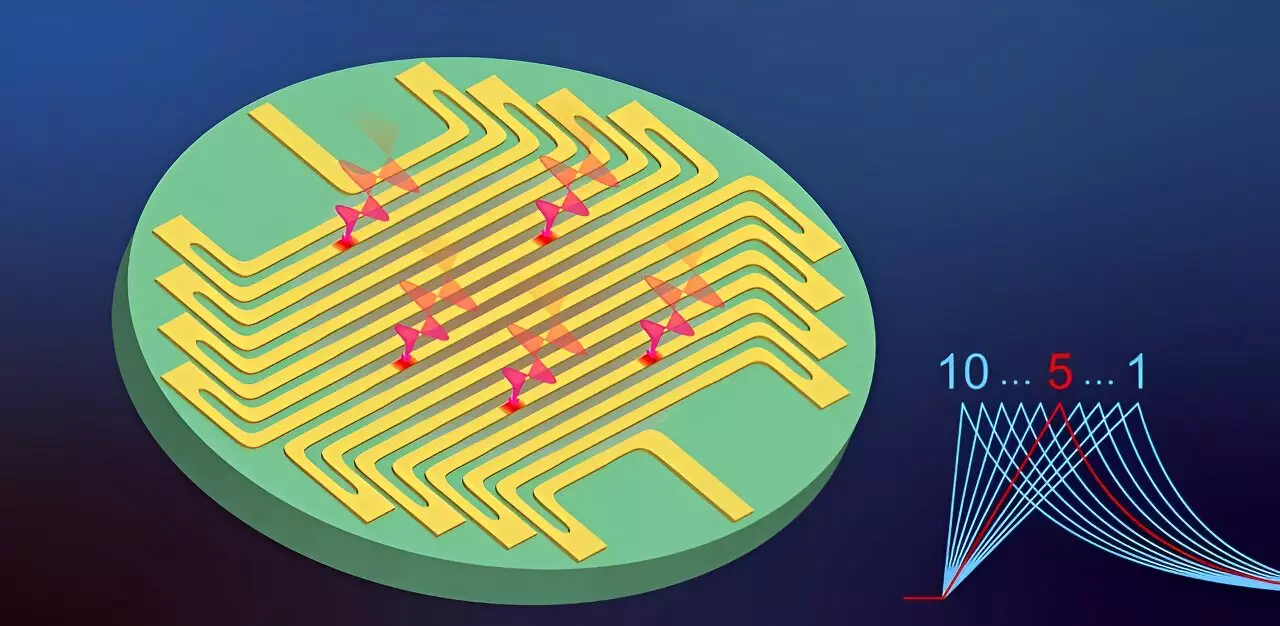Quantum information technology heavily relies on the use of single photons as qubits. The accurate determination of the number of photons is crucial for the success of various quantum systems such as quantum computation, quantum communication, and quantum metrology. Photon-number-resolving detectors (PNRDs) play a vital role in achieving this accuracy. These detectors have two main performance indicators: resolving fidelity and dynamic range. Superconducting nanostrip single-photon detectors (SNSPDs) have emerged as the leading technology for single-photon detection due to their near-perfect efficiency and high-speed performance. However, SNSPD-based PNRDs have faced challenges in striking a balance between fidelity and dynamic range.
Existing array-style SNSPDs, which divide incident photons among a limited number of pixels, have struggled with fidelity constraints. These detectors are commonly referred to as quasi-PNRDs. The operation of SNSPDs involves breaking the local superconductivity of a narrow, cooled, current-biased strip upon photon absorption. This creates a hotspot, leading to the generation of a detectable voltage pulse. However, conventional SNSPDs combined with modified cryogenic readouts have only been able to resolve 3-4 photon numbers, resulting in a low dynamic range.
Recently, researchers from the Shanghai Institute of Microsystem and Information Technology (SIMIT), Chinese Academy of Sciences, have made significant progress in enhancing the photon-number-resolving capability of SNSPDs. By increasing the strip width or total inductance, the researchers overcame bandwidth limitations and timing jitter in readout electronics. This breakthrough resulted in stretched rising edges and improved signal-to-noise ratio in the response pulses, consequently enhancing readout fidelity. The researchers widened the superconducting strip to a micrometer scale and achieved the first observation of true-photon-number resolution up to 10 using the superconducting microstrip single-photon detector (SMSPD). Most surprisingly, these impressive results were obtained even without the use of cryogenic amplifiers.
The widened superconducting strip in the SMSPD allowed for increased readout fidelity. The researchers achieved a remarkable readout fidelity of 98 percent for 4-photon events and 90 percent for 6-photon events. In addition, they proposed a dual-channel timing setup to enable real-time photon-number readout. This approach dramatically reduced data acquisition requirements by three orders of magnitude and simplified the readout setup.
The researchers also demonstrated the utility of their system in quantum information technology. They created a quantum random-number generator based on sampling the parity of a coherent state. This technology ensures unbiasedness, robustness against experimental imperfections and environmental noise, and resistance to eavesdropping. The successful implementation of this system highlights the potential of SNSPDs or SMSPDs for achieving high-fidelity and large-dynamic-range photon-number resolution.
With further improvements in the detection efficiency of SMSPDs, this technology could become readily accessible for various optical quantum information applications. The advancements made by the researchers at SIMIT have opened up new possibilities for the field of PNRDs. The combination of high-fidelity readout, large-dynamic-range photon-number resolution, and simplified setup holds great promise for the future of quantum information technology.
The breakthroughs in enhancing the photon-number-resolving capability of SNSPDs by the researchers at SIMIT have paved the way for significant advancements in the field of PNRDs. The achieved high readout fidelity, true-photon-number resolution, and simplified setup have the potential to revolutionize quantum information technology. As further improvements are made, the accessibility and applicability of SNSPDs or SMSPDs in optical quantum information applications will continue to grow.


Leave a Reply